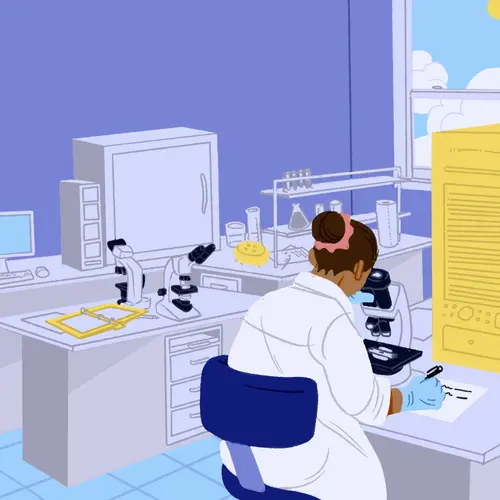Age-related macular degeneration (AMD) is an eye disease that destroys the macula, which is part of the retina at the back of your eye. Your macula allows you to see color, fine detail, and things directly in front of you (which is your central or “straight ahead” vision).
There are two types of AMD: dry and wet. About 90% of people who have AMD have dry AMD. With dry AMD, layers of the macula become thinner over time. That makes the macula work less well and leads to vision problems.
But an estimated 10% of people with AMD have the wet type. With wet AMD (also called neovascular AMD or exudative AMD), abnormal blood vessels grow under the macula. These blood vessels are weak. They leak blood and fluids into layers of your retina, including your macula.
Wet AMD almost always starts as dry AMD, although you may not know it until you get diagnosed with wet AMD. The symptoms of wet AMD often start suddenly and are usually severe. If you have AMD in one eye, it’s very likely you’ll also get it in the other eye.
How Wet AMD Causes Vision Loss
A healthy macula is flat. With wet AMD, leaked blood and fluids cause a bulge in your retina. The leaking blood vessels can also cause scar tissue to form and damage cells in your retina. That damages your central vision. Images in front of you might be distorted. For example, straight lines may look wavy. Things in your central vision may be blurred, hazy, or impossible to see. You might see dark spots in the center of your vision, too. But you should still be able to see normally in your side vision (also called peripheral vision).
Wet AMD can cause severe vision loss. But neither wet nor dry AMD leads to total blindness since you keep your side vision. Even so, having wet AMD can make it very hard to do things you need and want to do, such as reading or seeing faces directly in front of you.
Risk Factors
It’s not clear what causes wet AMD. But you’re more likely to get it if you:
Have dry AMD. Wet AMD happens in people who’ve already had dry AMD, even if they didn’t know they had it.
Have a family history of AMD. If you have wet AMD, you may have inherited certain genes that increase your likelihood of getting it.
Are over 50. AMD is called “age-related macular degeneration” because it tends to show up as you age. Wet AMD is most common in people over 50 and becomes even more common in your 70s and 80s. Still, it’s not a normal part of aging.
Smoke. Lighting up doubles your odds of developing wet AMD. In addition to cutting off oxygen to your eyes, researchers think smoking may damage cells and make it harder for nutrients to reach your eyes through your bloodstream.
Have heart disease or high blood pressure. High blood pressure is linked to a higher risk of developing AMD in the first place and makes it worse if you already have it. And conditions that affect your heart and blood vessels raise your odds of developing wet AMD.
Are a woman. Wet AMD is more common in women than in men. Doctors don’t know why.
Are white. Wet AMD is more common among white people than African American, Latino, and Hispanic people.
Are obese. Obesity makes it more likely that early-stage AMD will turn into advanced wet AMD.

